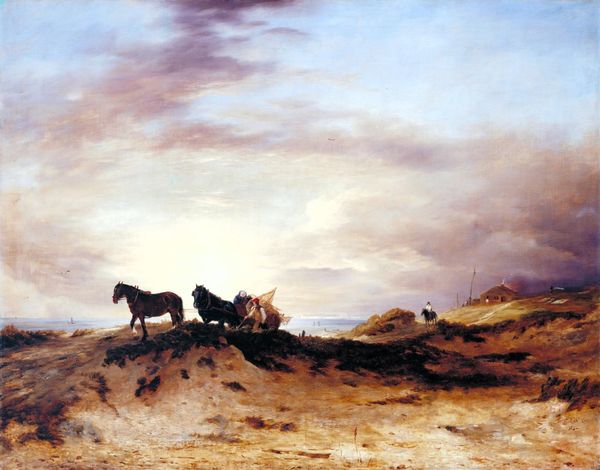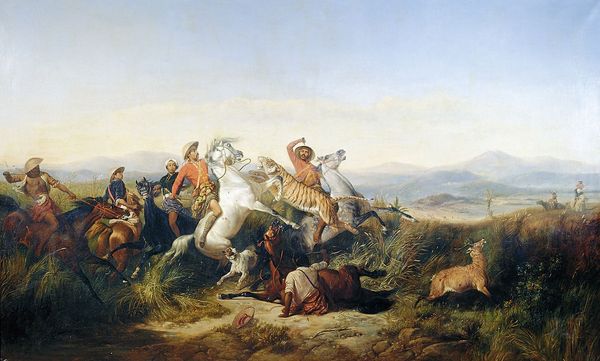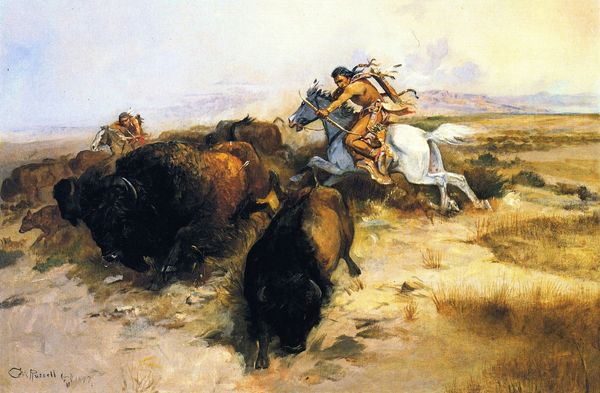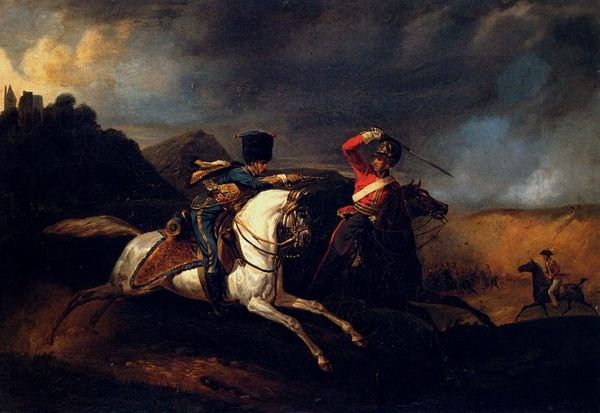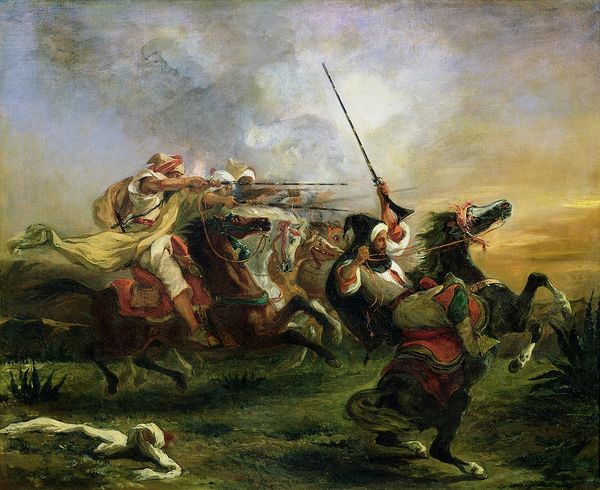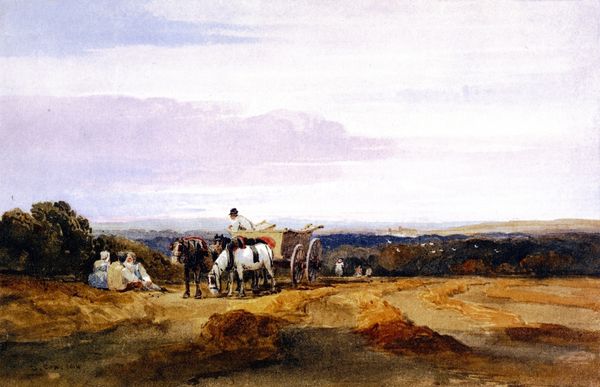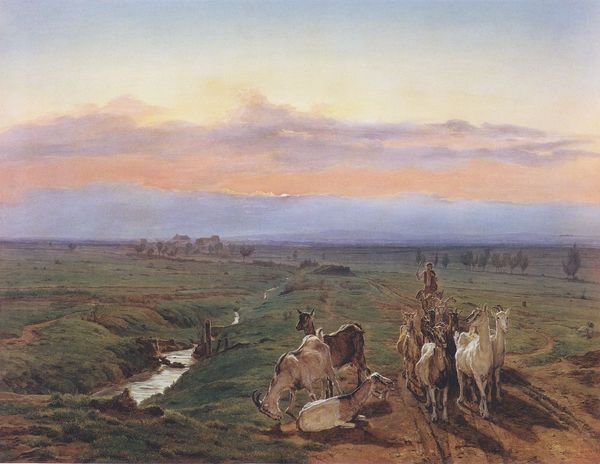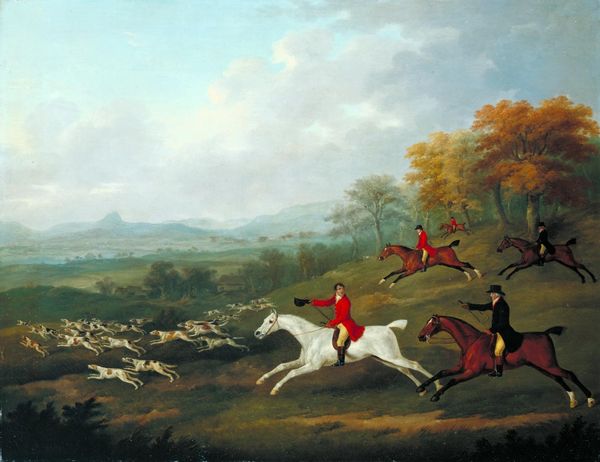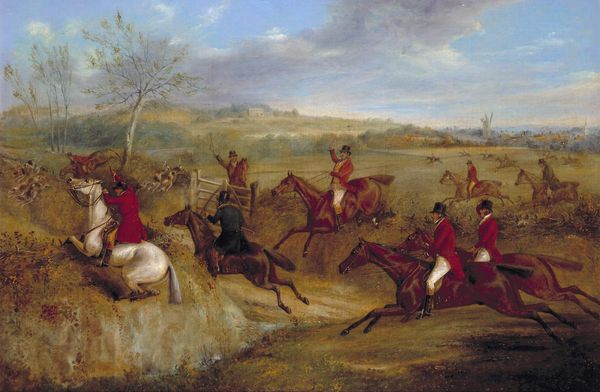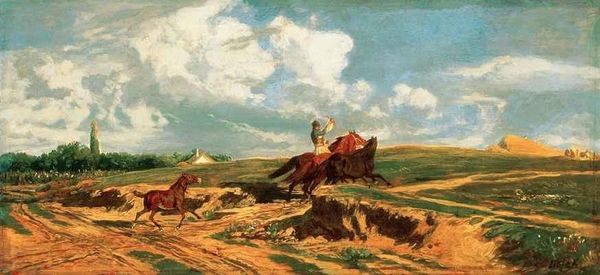
Dimensions: 181 x 302.9 cm
Copyright: Public domain
Editor: This is Albert Bierstadt’s "The Last of the Buffalo," painted in 1888 with oil on canvas. It's quite a dramatic scene; a clash between humans, horses, and the massive buffalo set against a backdrop of a vast landscape. I am struck by how the skulls littering the foreground add a very heavy, symbolic weight to the drama playing out. What stands out to you the most about this piece? Curator: The most powerful aspect is how it uses the visual vocabulary of Romanticism to stage a moment heavy with cultural loss. Notice how Bierstadt contrasts the 'sublime' mountain backdrop – representing an idealized American West – with the foreground's carnage. What do the skulls signify to you? Editor: They are clearly memento mori, stark reminders of death, and of a once vibrant ecosystem being decimated. Curator: Exactly! Bierstadt isn’t merely depicting a hunt; he's composing a visual elegy. He masterfully employs symbols – the dying buffalo, the hunter, even the pristine mountains looming in the distance – to comment on the perceived end of an era. Do you think he romanticizes the Indigenous figure? Editor: It's hard to say; it's a romantic style, so there is an element of idealization. However, by presenting him as the active force, Bierstadt complicates any simplistic interpretation of victimhood. It becomes about transition. Curator: Precisely. This painting shows a specific cultural moment laden with many intersecting memories – of a changing West, of disappearing wildlife, and of cultures clashing and transforming. It's a potent visual record. Editor: I hadn't thought about how each element functions as a symbol within a broader narrative of cultural change and loss. This adds so many new layers of understanding!
Comments
No comments
Be the first to comment and join the conversation on the ultimate creative platform.
